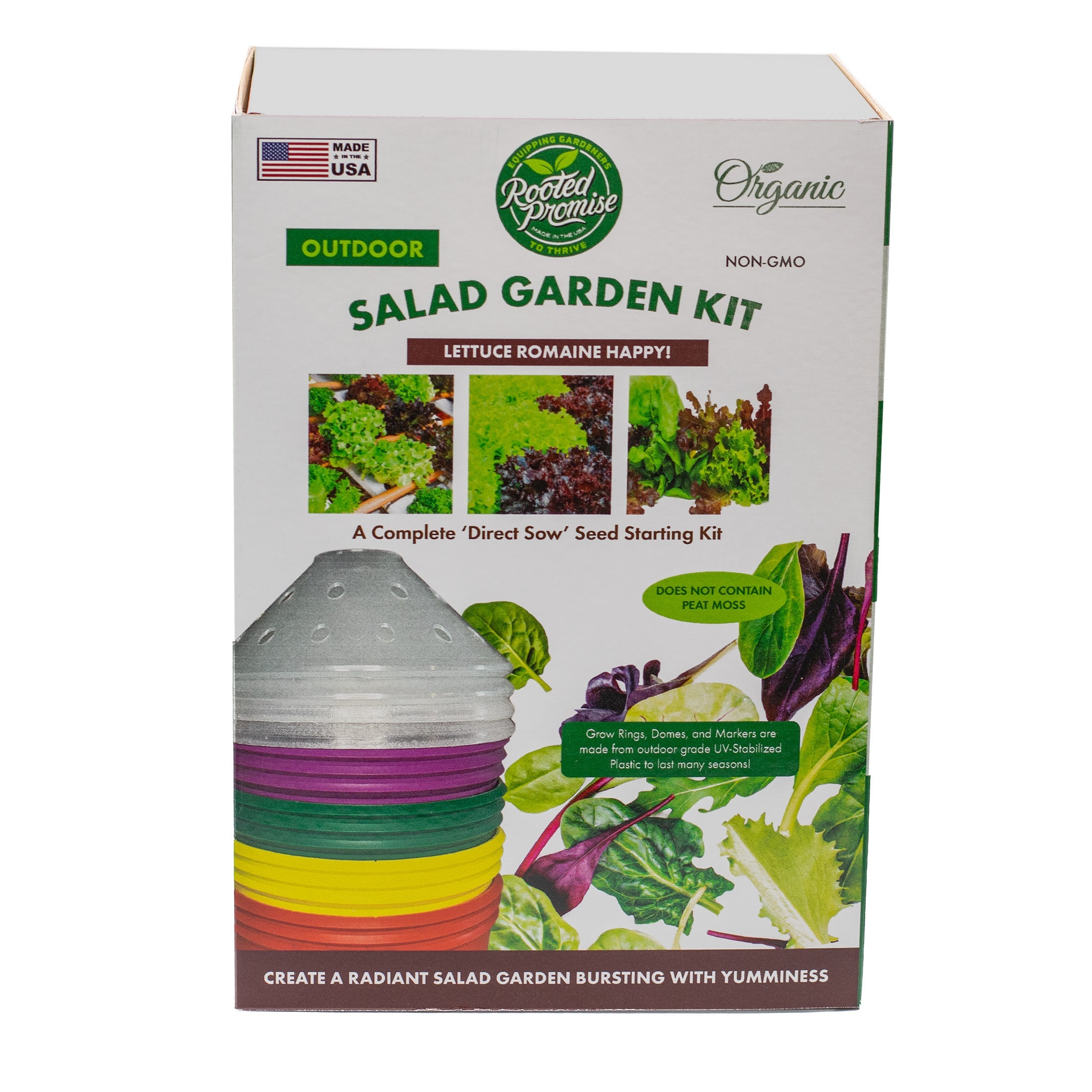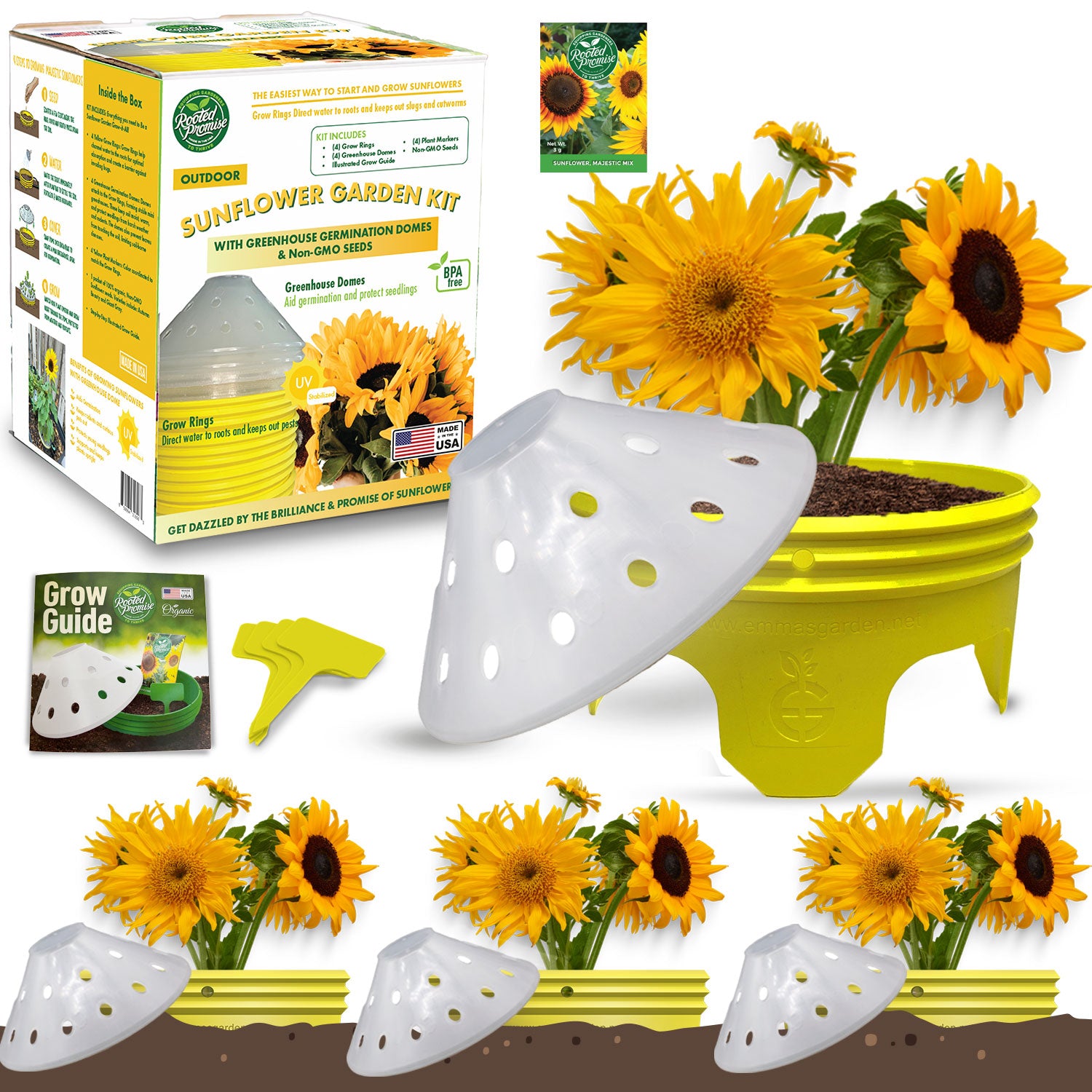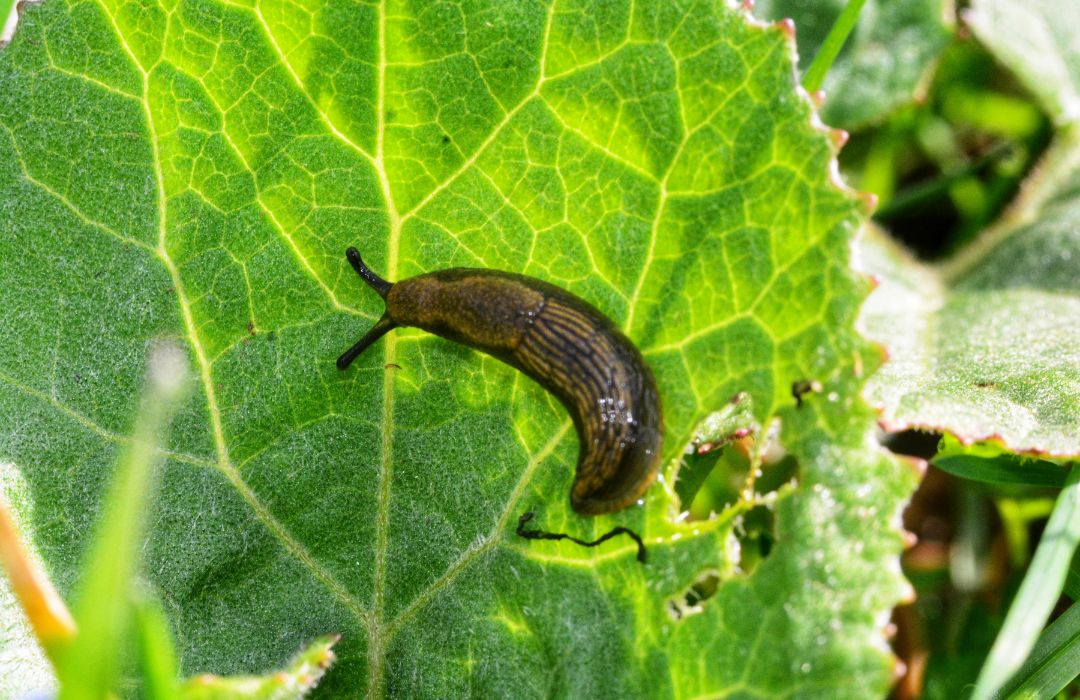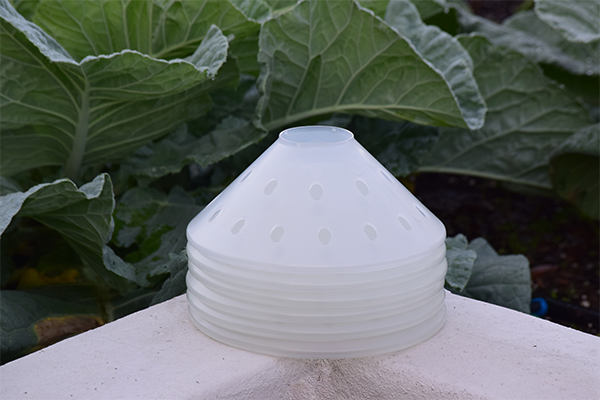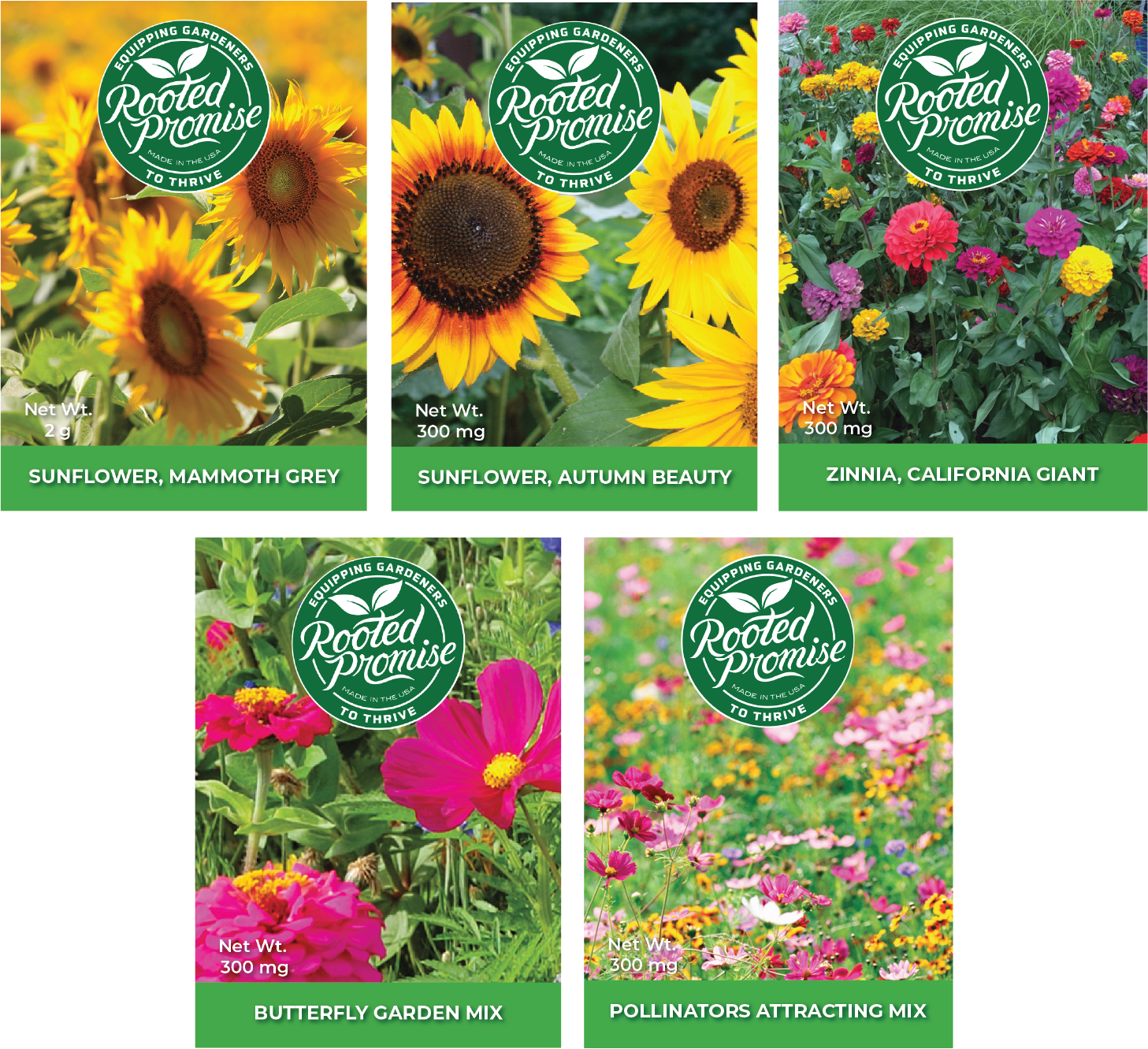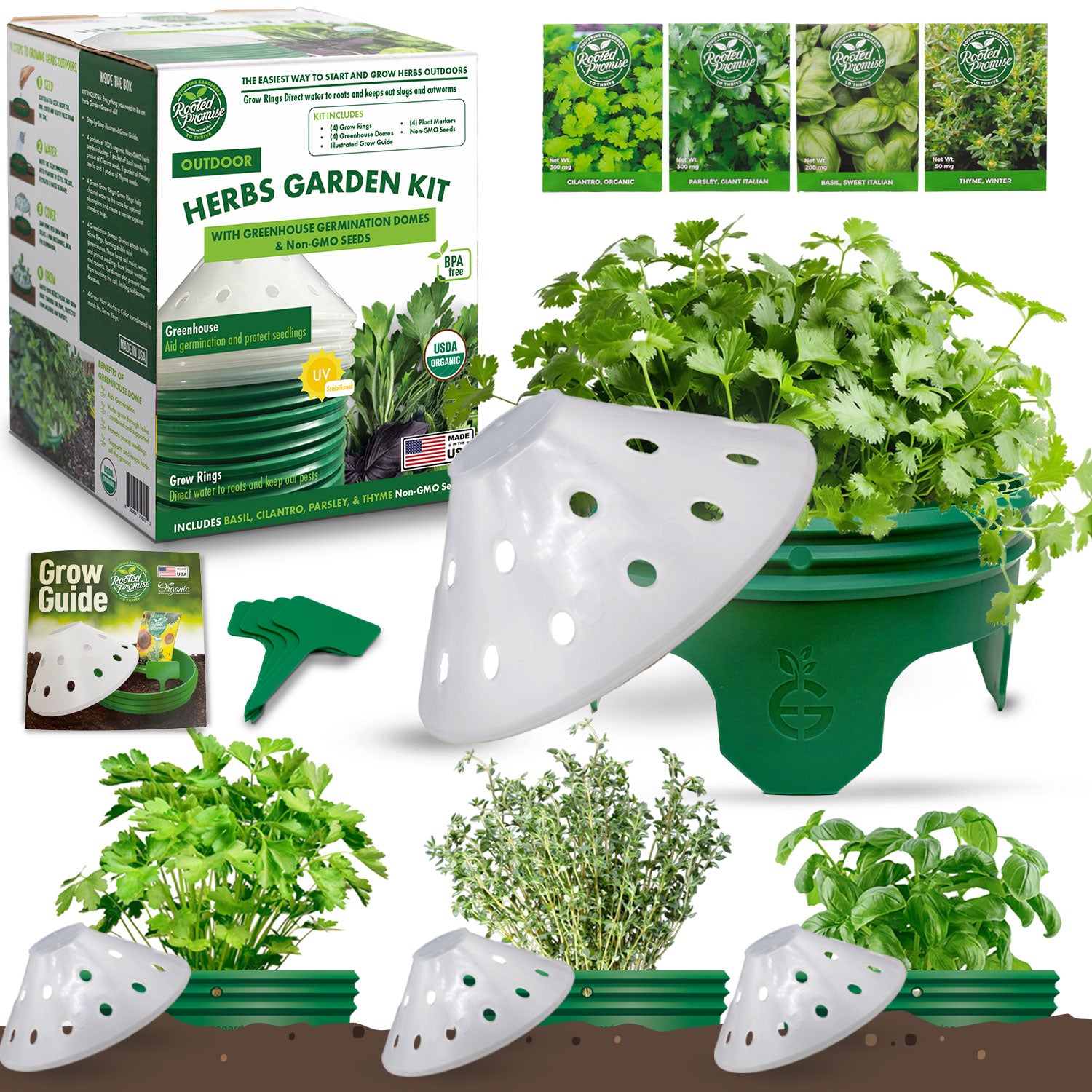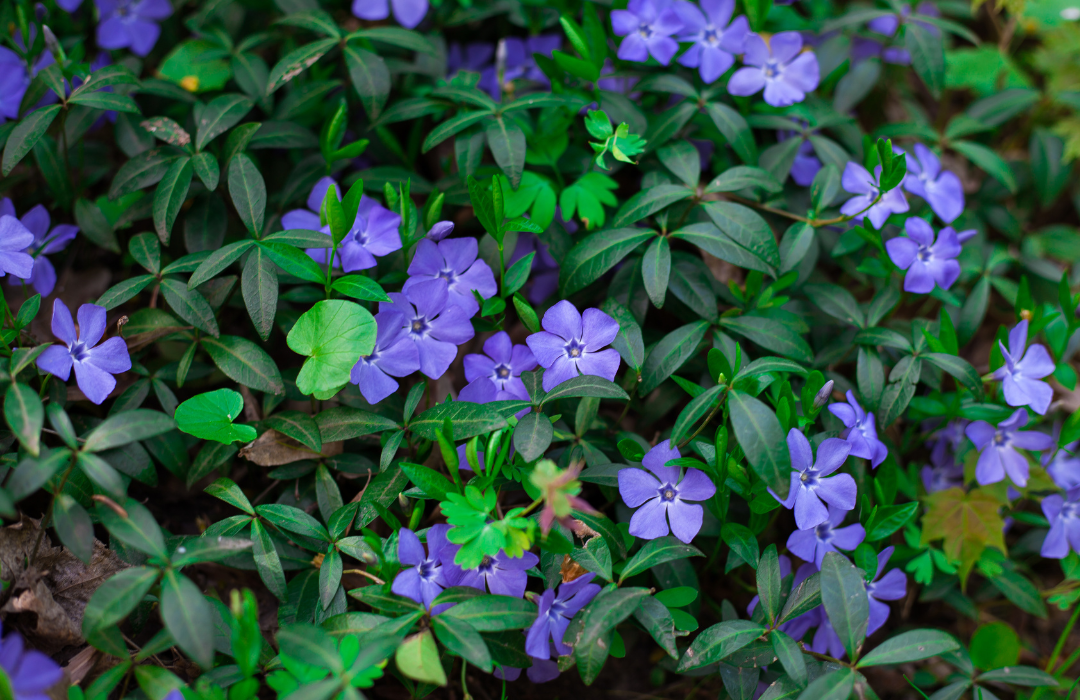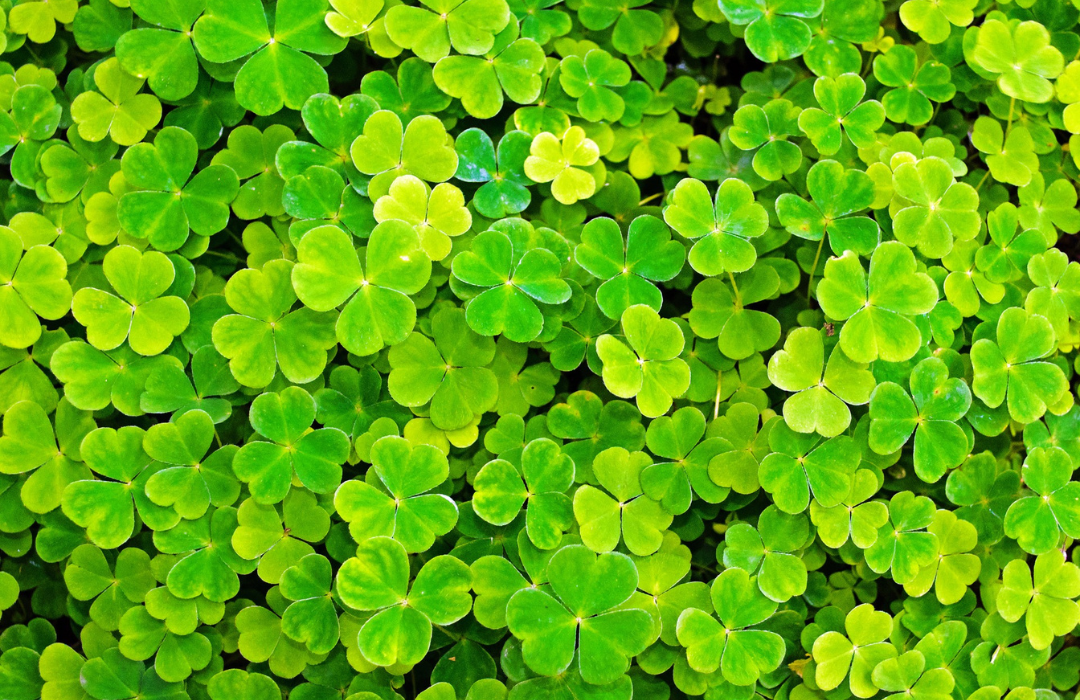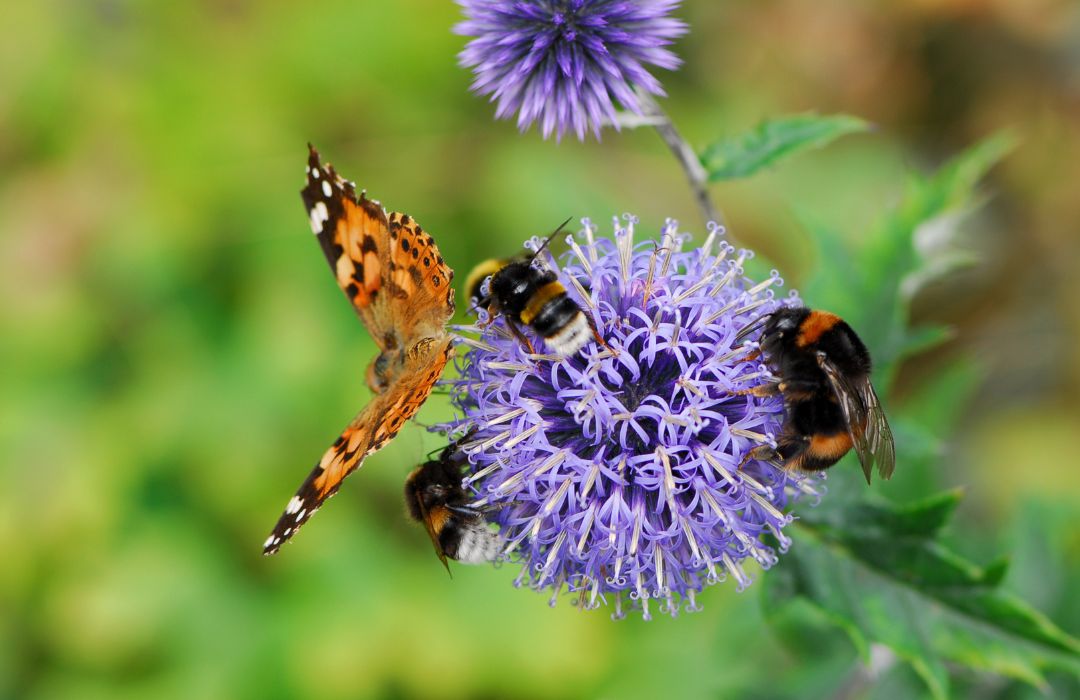
Table of Contents
- Introduction
- Why use natural insect repellents in gardens?
- The dangers of chemical insecticides
- The benefits of natural alternatives
- Common natural insect repellents for gardens
- Eucalyptus oil
- Lemongrass
- Neem Oil
- How to use natural insect repellents in your garden
- Creating homemade insect repellent sprays
- Planting repellent herbs and flowers
- Utilizing Companion planting
- Other natural methods for pest control in gardens
- Introducing beneficial insects
- Using physical barriers
- Practicing proper garden maintenance
- Factors to consider when choosing natural repellent
- Effectiveness against target pests
- Safety for humans, pets, and beneficial insects
- Ease of application and avaiability
Introduction
Gardens are a haven of beauty and tranquility, but they also attract unwanted guests in the form of pests. While chemical insecticides are commonly used to combat these pests, they can have harmful effects on the environment, beneficial insects, and even human health. That's why many gardeners are turning to natural insect repellents as a safer and more eco-friendly alternative.
In this guide, we will explore the best natural insect repellents for gardens and how to use them effectively. By incorporating these natural alternatives into your pest control routine, you can protect your plants without compromising the health of your garden or the planet.
From essential oils to companion planting, we will cover a range of strategies that have been proven to repel pests and keep your garden thriving. Whether you're dealing with aphids, mosquitoes, or other common garden pests, we have you covered with effective and natural solutions.
So, let's dive in and discover the best natural insect repellents for gardens!

Why use natural insect repellents in gardens?
When it comes to protecting your garden from pests, using natural insect repellents offers several advantages over chemical insecticides. Here’s why more gardeners opting for natural alternatives:
- The dangers of chemical insecticides: Chemical insecticides often contain toxic substances that can harm beneficial insects, such as bees and ladybugs, that play a vital role in pollination and pest control. These chemicals can also contaminate the soil and water, posing a threat to the ecosystem
- The benefits of natural alternatives: Natural insect repellents, on the other hand, are derived from plant-based ingredients and are generally considered safe for humans, pets, and beneficial insects. They provide an effective solution for pest control without causing harm to the environment.
By choosing natural insect repellents, you can strike a balance between pest control and environmental stewardship.

Common natural insect repellents for gardens
When it comes to natural insect repellents for gardens, there are several options available that can effectively ward off pests without the use of harmful chemicals. Here are three common natural repellents:
- Eucalyptus oil: Eucalyptus oil is derived from the leaves of eucalyptus trees and has been found to repel a wide range of insects, including mosquitoes, flies, and ants. Its strong aroma acts as a natural deterrent, making it an effective choice for outdoor use.
- Lemongrass: Lemongrass is a fragrant herb that is known for its repellent properties. The strong lemony scent of lemongrass masks the scents that attract pests, making it an excellent natural repellent for mosquitoes, ticks, and other insects.
- Neem oil: Neem oil is derived from the seeds of the neem tree and is widely used in organic gardening. It contains compounds that disrupt the breeding and feeding patterns of insects, making it an effective repellent for a variety of pests, including aphids, beetles, and caterpillars.
These natural insect repellents can be used in various forms, such as sprays, candles, or even planted directly in your garden. Experiment with different options to find the one that works best for your garden and target pests.
How to use natural insect repellents in your garden
Now that you have chosen the natural insect repellents that best suit your needs, it's time to put them to use in your garden. Here are some effective methods for using natural insect repellents:
-
Creating homemade insect repellent sprays - One of the simplest ways to apply natural insect repellents is by creating homemade sprays. You can mix the repellent ingredients with water or a carrier oil, such as coconut oil or almond oil, and spray the mixture onto your plants. Be sure to test the spray on a small area of your plants first to ensure that it doesn't cause any adverse effects.
-
Planting repellent herbs and flowers - Another effective method is to incorporate repellent herbs and flowers into your garden. Plants such as basil, lavender, marigold, and mint have natural insect-repellent properties. By planting these herbs and flowers near your susceptible plants, you can create a natural barrier against pests.
- Utilizing companion planting - Companion planting is the practice of growing certain plants together to benefit each other. Some plants naturally repel pests, while others attract beneficial insects that prey on pests. By strategically planting these companion plants, you can create a balanced ecosystem that naturally controls pests. For example, planting marigolds near tomatoes can deter aphids, while attracting ladybugs that feed on aphids.
Remember to follow the instructions provided with the specific natural insect repellents you are using. Different repellents may have different application methods and recommended dosages.
By incorporating these methods into your garden routine, you can effectively repel pests and protect your plants without resorting to harmful chemicals.
Creating homemade insect repellent sprays
One of the simplest and most versatile methods for using natural insect repellents in your garden is by creating homemade sprays. These sprays can be easily made using ingredients that are readily available and safe for both your plants and the environment.
To create your own homemade insect repellent spray, you will need a few key ingredients:
- Essential oils: Essential oils are concentrated plant extracts that have strong scents and repel insects. Some popular choices for insect repellents include citronella, peppermint, lavender, and eucalyptus. These essential oils not only repel pests but also add a pleasant fragrance to your spray.
- Liquid soap: Liquid soap acts as an emulsifier, helping to mix the essential oils with water. It also helps the spray adhere to the plants, providing longer-lasting protection.
- Water: Water is used as the base of the spray and dilutes the essential oils. It is important to use clean, distilled water to avoid any impurities that may harm your plants.
Once you have gathered your ingredients, follow these simple steps to create your homemade insect repellent spray:
- Fill a clean spray bottle with water, leaving enough room for the other ingredients.
- Add a few drops of your chosen essential oils to the spray bottle. The number of drops will depend on the strength of the scent and the size of your spray bottle. As a general guideline, start with 10-15 drops for a small spray bottle and adjust as needed.
- Add a small amount of liquid soap to the spray bottle. A teaspoon or two should be sufficient for most spray bottles.
- Screw the spray bottle cap back on and gently shake the bottle to mix the ingredients. Make sure the soap is well incorporated into the water and essential oils.
Now your homemade insect repellent spray is ready to use! Simply spray it directly onto your plants, focusing on the leaves and stems where pests are most likely to gather. Be sure to cover the entire plant for maximum effectiveness.
It's important to note that homemade insect repellent sprays may need to be reapplied after rain or heavy watering, as the water can wash away the repellent. Additionally, always test the spray on a small area of your plants before applying it to the entire garden to ensure that it doesn't cause any adverse effects.
Creating your own homemade insect repellent sprays not only allows you to tailor the ingredients to your specific needs but also provides a cost-effective and eco-friendly solution for pest control in your garden.
Planting repellent herbs and flowers
Another effective method for using natural insect repellents in your garden is by planting repellent herbs and flowers. These plants not only add beauty and fragrance to your garden but also act as natural deterrents for pests.
Here are some popular repellent herbs and flowers that you can consider planting:
- Lavender: Lavender is known for its calming scent, but it also repels pests such as mosquitoes, fleas, and moths. Plant lavender near entrances or seating areas to keep these unwanted insects at bay.
- Basil: Basil is a versatile herb that is commonly used in cooking, but it also repels flies, mosquitoes, and aphids. Plant basil near your vegetable garden or outdoor dining area to keep these pests away.
- Marigold: Marigolds are vibrant flowers that not only add color to your garden but also repel pests such as aphids, mosquitoes, and nematodes. Plant marigolds around your garden borders or in pots near susceptible plants.
- Mint: Mint is a refreshing herb that repels pests like ants, flies, and mice. Plant mint in pots or containers to prevent it from spreading and taking over your garden.
- Rosemary: Rosemary is a fragrant herb that repels pests such as mosquitoes, flies, and cabbage moths. Plant rosemary near your outdoor seating area or in your vegetable garden to keep these pests away.
When planting these repellent herbs and flowers, consider their specific requirements for sunlight, soil, and water. Some plants may thrive in full sun, while others prefer partial shade. Be sure to provide them with the optimal growing conditions to ensure their effectiveness as natural insect repellents.
By incorporating these repellent herbs and flowers into your garden, you can create a natural barrier against pests while adding beauty and fragrance to your outdoor space.
Utilizing companion planting
Companion planting is a gardening technique that involves growing certain plants together to benefit each other. By strategically selecting companion plants, you can create a natural pest control system in your garden.
Companion plants can work in different ways to repel pests. Some plants emit strong scents that mask the scent of your target plants, making them less attractive to pests. Others attract beneficial insects that prey on common garden pests. By interplanting these companion plants throughout your garden, you can create a balanced ecosystem that naturally controls pest populations.
Here are some examples of companion plants and their benefits:
- Marigolds: Marigolds are known for their strong scent, which repels pests like aphids, nematodes, and whiteflies. Plant marigolds near susceptible plants to deter these pests.
- Nasturtiums: Nasturtiums attract aphids, making them a sacrificial plant. By planting nasturtiums near your vegetables, you can draw aphids away from your crops and protect them.
- Lavender: Lavender attracts pollinators like bees and butterflies, which help with pollination and pest control. Plant lavender near your vegetable garden to encourage beneficial insects.
- Basil: Basil repels mosquitoes and flies, making it an excellent companion plant for outdoor seating areas or near plants that are prone to insect attack.
When utilizing companion planting, it's important to consider the specific needs and compatibility of the plants you choose. Some plants may have different soil, water, or sunlight requirements, so be sure to research their individual preferences before planting.
By strategically selecting companion plants and integrating them into your garden design, you can create a natural pest control system that reduces the need for chemical interventions.
Other natural methods for pest control in gardens
In addition to using natural insect repellents and companion planting, there are several other effective methods for pest control in gardens. These methods are safe, environmentally friendly, and can help maintain a healthy and thriving garden. Here are some of the most popular natural pest control strategies:
-
Introducing beneficial insects - One of the most natural and effective ways to control garden pests is by introducing beneficial insects. These insects prey on common garden pests, keeping their populations in check. Ladybugs, lacewings, and praying mantises are just a few examples of beneficial insects that can help control aphids, caterpillars, and other pests. You can attract these insects to your garden by planting flowers and herbs that provide nectar and pollen, as well as creating habitats such as bug hotels or small ponds.
-
Using physical barriers - Physical barriers can be an effective way to prevent pest damage in your garden. These barriers can include row covers, netting, or fences that protect your plants from insects, birds, or larger animals. Row covers, for example, can be used to protect young seedlings from insects and create a barrier against pests like cabbage moths or carrot flies. Netting can be used to protect fruit trees from birds, while fences can keep out larger pests like rabbits or deer.
-
Practicing proper garden maintenance - Proper garden maintenance is crucial for preventing and managing pest problems. Regularly removing weeds, keeping your garden clean and free of debris, and maintaining healthy soil can help reduce pest populations. Weeds can provide shelter and food for pests, so removing them can eliminate potential hiding places. Cleaning up fallen leaves or fruit can also prevent pests from feeding and breeding. Additionally, maintaining healthy soil through proper watering, fertilization, and crop rotation can help plants withstand pest attacks.
By incorporating these natural pest control methods into your gardening routine, you can create a balanced and resilient ecosystem that minimizes the need for chemical interventions. These methods not only help control pests but also promote biodiversity and support the overall health of your garden.
Now that you are familiar with various natural methods for pest control in gardens, let's explore the factors to consider when choosing a natural repellent.
Introducing beneficial insects
When it comes to natural pest control in gardens, sometimes the best defense is a good offense. Instead of trying to eradicate pests on your own, why not recruit some help from nature? Introducing beneficial insects to your garden can be an effective and environmentally friendly way to manage pest populations.
Beneficial insects, such as ladybugs, lacewings, and praying mantises, are natural predators of many common garden pests. They feed on insects like aphids, caterpillars, and mites, keeping their populations in check and preventing them from causing damage to your plants.
By attracting and providing a habitat for these beneficial insects, you can create a balanced ecosystem in your garden. Here are a few ways you can introduce beneficial insects:
- Plant flowers that attract beneficial insects: Many beneficial insects are attracted to flowers that provide them with nectar and pollen. By planting a variety of flowers, such as marigolds, daisies, and sunflowers, you can create an inviting environment for these helpful creatures.
- Install insect houses or hotels: Insect houses, also known as bug hotels, provide shelter and nesting sites for beneficial insects. These small structures are typically made of wood and contain crevices and holes where insects can live and reproduce. By installing an insect house in your garden, you can encourage beneficial insects to take up residence.
- Provide water sources: Like all living creatures, beneficial insects need water to survive. By providing a small water source, such as a shallow dish filled with water and pebbles, you can attract and support beneficial insects in your garden.
It's important to note that introducing beneficial insects is not a quick fix for pest problems. It may take time for the populations of beneficial insects to establish and for the balance to be restored in your garden. However, with patience and persistence, you can create a natural pest control system that is both effective and sustainable.
Using physical barriers
When it comes to protecting your garden from pests, physical barriers can be a highly effective method. By creating physical barriers, you can prevent pests from accessing your plants and causing damage.
There are several types of physical barriers that you can use in your garden:
- Netting: Netting is a commonly used physical barrier that can be draped over plants or attached to frames to create a protective barrier. It is particularly effective in keeping out birds, rabbits, and larger insects.
- Fencing: Fencing can be used to enclose your entire garden or specific areas within it. It can be made from materials such as wire mesh or chicken wire and should be buried underground to prevent burrowing pests from entering.
- Row covers: Row covers are lightweight fabric covers that can be placed directly over rows of plants. They allow sunlight and water to reach the plants while creating a barrier against pests like insects and birds.
- Cloches: Cloches are individual protective covers that can be placed over individual plants or seedlings. They can be made from materials such as glass, plastic, or even recycled plastic bottles.
When using physical barriers, it's important to make sure they are properly installed and secure. Check for any gaps or openings that pests could squeeze through and ensure that the barriers are firmly anchored to prevent them from being blown away by wind or knocked over by animals.
Physical barriers are a great option for protecting specific plants or areas in your garden. They provide a physical barrier that pests cannot penetrate, effectively keeping them away from your precious plants.
Now that you know how to use physical barriers, let's move on to the next natural method: practicing proper garden maintenance.
Practicing proper garden maintenance
Proper garden maintenance is an essential aspect of natural pest control. By following good gardening practices, you can create an environment that is less attractive to pests and more resistant to infestations. Here are some key practices to incorporate into your garden maintenance routine:
- Regularly remove weeds: Weeds not only compete with your plants for resources but also provide hiding places and breeding grounds for pests. By regularly removing weeds, you can eliminate potential pest habitats and reduce the risk of infestations.
- Clean up garden debris: Fallen leaves, plant debris, and decaying organic matter can attract pests and provide them with shelter. Be sure to regularly clean up your garden by raking leaves, removing dead plants, and disposing of any decaying organic material.
- Practice proper watering: Overwatering can create favorable conditions for pests, such as fungus gnats and root rot. On the other hand, underwatering can weaken your plants and make them more susceptible to infestations. Find the right balance by watering your plants deeply and infrequently, allowing the soil to dry out between waterings.
- Monitor for signs of pests: Regularly inspect your plants for any signs of pest activity, such as chewed leaves, wilting, or discoloration. Early detection can help you take action before an infestation becomes severe.
- Encourage biodiversity: A diverse garden ecosystem can help naturally control pests by attracting beneficial insects and predators. Plant a variety of flowers, herbs, and vegetables to create a habitat that supports a wide range of beneficial insects and wildlife.
- Rotate crops: Crop rotation can help break pest cycles and reduce the risk of recurring infestations. Avoid planting the same crop in the same location year after year, as this can allow pests to build up in the soil.
- Practice proper pruning: Pruning your plants can help improve air circulation and sunlight penetration, reducing the risk of fungal diseases. It can also remove infested or diseased plant parts, preventing the spread of pests.
- Use organic fertilizers and soil amendments: Chemical fertilizers can disrupt the natural balance of your garden ecosystem and harm beneficial insects. Opt for organic fertilizers and soil amendments that nourish your plants without negatively impacting the environment.
By incorporating these practices into your garden maintenance routine, you can create a healthier and more resilient garden that is less vulnerable to pests. Proper garden maintenance is a proactive approach to pest control that can help prevent infestations and minimize the need for intervention.
Factors to consider when choosing a natural repellent
When choosing a natural insect repellent for your garden, it's important to consider several factors to ensure its effectiveness and safety. Here are some key factors to keep in mind:
-
Effectiveness against target pests
Different natural repellents may be more effective against specific pests. Consider the pests that are commonly found in your garden and choose a repellent that specifically targets those pests. For example, if mosquitoes are a major problem, look for a repellent that has been proven to repel mosquitoes effectively.
It's also important to remember that natural repellents may not provide the same level of protection as chemical insecticides. While they can be effective in repelling pests, they may not eliminate them. Regular application and combining different repellents or methods may be necessary for optimal results.
-
Safety for humans, pets, and beneficial insects
Ensure that the chosen natural repellent is safe for humans, pets, and beneficial insects. Read the product labels carefully and look for any warnings or precautions. Some essential oils or ingredients may cause allergic reactions or sensitivity in certain individuals, so it's important to test the repellent on a small area before widespread use.
Additionally, consider the impact on beneficial insects, such as bees, butterflies, and ladybugs. Choose repellents that do not harm these important pollinators and predators, as they play a crucial role in maintaining a healthy garden ecosystem.
-
Ease of application and availability
Consider the ease of application and availability of the chosen repellent. Some repellents may require dilution or mixing with other ingredients, while others are ready to use. Choose a repellent that fits your preference and convenience.
Additionally, ensure that the chosen repellent is readily available in your area or can be easily obtained. It's important to have easy access to the repellent to maintain regular application and effectively manage pest populations.
By considering these factors, you can choose a natural insect repellent that aligns with your pest control needs while prioritizing the safety of your garden and its inhabitants.
Now that you understand the factors to consider when choosing a natural repellent, you are well-equipped to make an informed decision for your garden. In the next section, we will summarize the key takeaways from this guide.
Effectiveness against target pests
When choosing a natural insect repellent for your garden, it's important to consider its effectiveness against the target pests you are dealing with. Different repellents may have varying levels of effectiveness against different pests.
Start by identifying the specific pests that are causing problems in your garden. Are you dealing with aphids, mosquitoes, or a combination of pests? Once you have a clear understanding of the pests you need to repel, look for natural repellents that have been proven to be effective against those specific pests.
For example, if mosquitoes are a major issue, you may want to consider repellents that contain ingredients like citronella, lemon eucalyptus, or lavender, as these have been shown to be effective in repelling mosquitoes. On the other hand, if you're dealing with aphids, you may want to look for repellents that contain neem oil or garlic, as these are known to deter aphids.
It's important to note that natural repellents may not provide the same level of effectiveness as chemical insecticides. However, they can still be highly effective in reducing pest populations and preventing damage to your plants. Regular and consistent application of the repellent is key to maintaining its effectiveness.
Consider the specific pests you're dealing with and choose a natural repellent that has a proven track record of repelling those pests effectively.
Safety for humans, pets, and beneficial insects
When selecting a natural insect repellent for your garden, it's essential to consider the safety of humans, pets, and beneficial insects. While natural repellents are generally safer than chemical insecticides, it's still important to choose products that are non-toxic and pose minimal risks to the environment.
First, ensure that the repellent is safe for humans. Read the product labels carefully and look for any warnings or precautions. Some essential oils or ingredients may cause allergic reactions or skin irritations in certain individuals. It's always a good idea to test the repellent on a small area of skin before applying it more widely.
Next, consider the safety of pets. Some natural repellents may be harmful to certain animals, so it's important to choose products that are pet friendly. If you have pets that spend time in your garden, opt for repellents that are specifically labeled as safe for use around animals.
Lastly, consider the impact on beneficial insects. Beneficial insects, such as bees, ladybugs, and butterflies, play a crucial role in pollination and pest control. Choose repellents that do not harm or deter these helpful creatures. Look for products that are specifically labeled as safe for beneficial insects or that have been tested and proven not to harm them.
By prioritizing the safety of humans, pets, and beneficial insects, you can ensure that your chosen natural repellent is not only effective but also environmentally friendly.
Ease of application and availability
When choosing a natural insect repellent for your garden, it's important to consider the ease of application and availability of the product. You want to choose a repellent that is convenient to use and readily accessible.
Consider the following factors:
- Application method: Some natural repellents come in ready-to-use sprays or granules, while others may require mixing or dilution. Choose a repellent that fits your preference and comfort level. If you prefer a spray, make sure it comes with an easy-to-use nozzle. If you prefer granules, ensure they can be easily spread around your garden.
- Frequency of application: Some repellents need to be applied more frequently than others. Consider how often you are willing to apply the repellent and choose one that aligns with your maintenance routine. If you're looking for a low-maintenance option, opt for repellents that provide long-lasting protection with fewer applications.
- Availability: Check the availability of the chosen repellent in your area. Some natural repellents may be more readily available in certain regions or online. Make sure you can easily obtain the repellent whenever you need to replenish your supply.
By choosing a repellent that is easy to apply and readily available, you can ensure a hassle-free pest control experience in your garden.
Now that you understand the factors to consider when choosing a natural insect repellent, you are well-equipped to make an informed decision for your garden.
Rooted Promise Greenhouse Dome and Grow Ring help naturally combat insects

